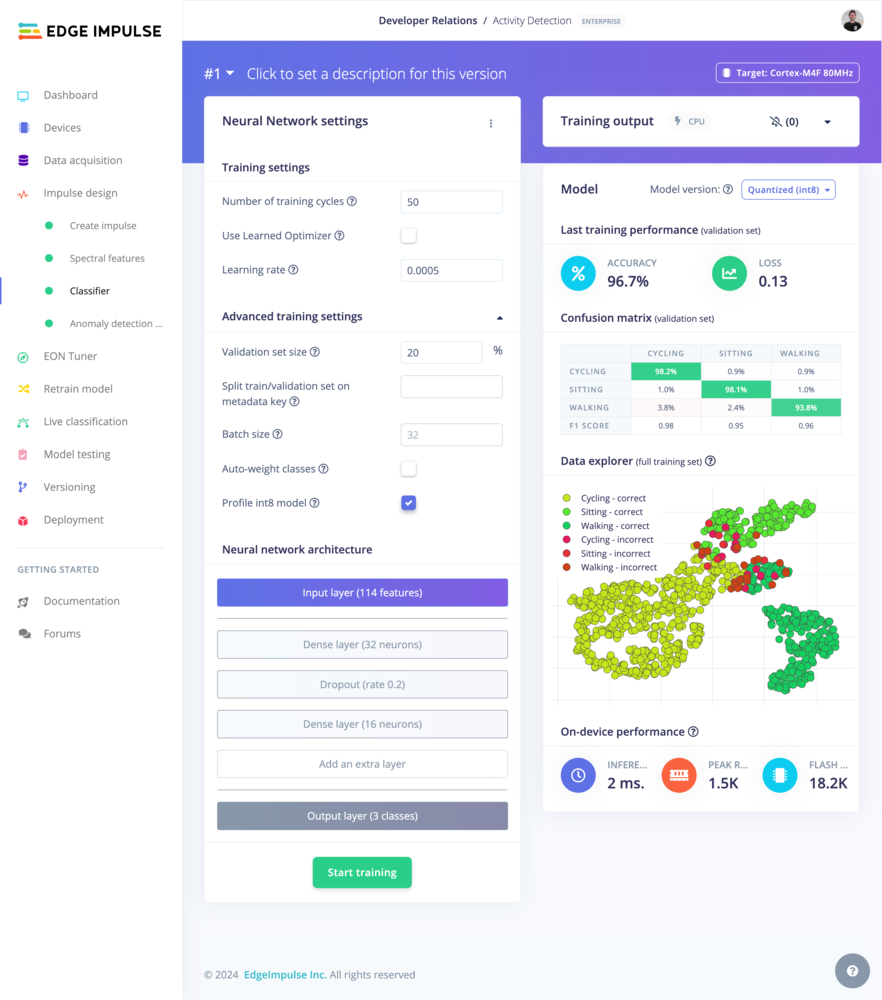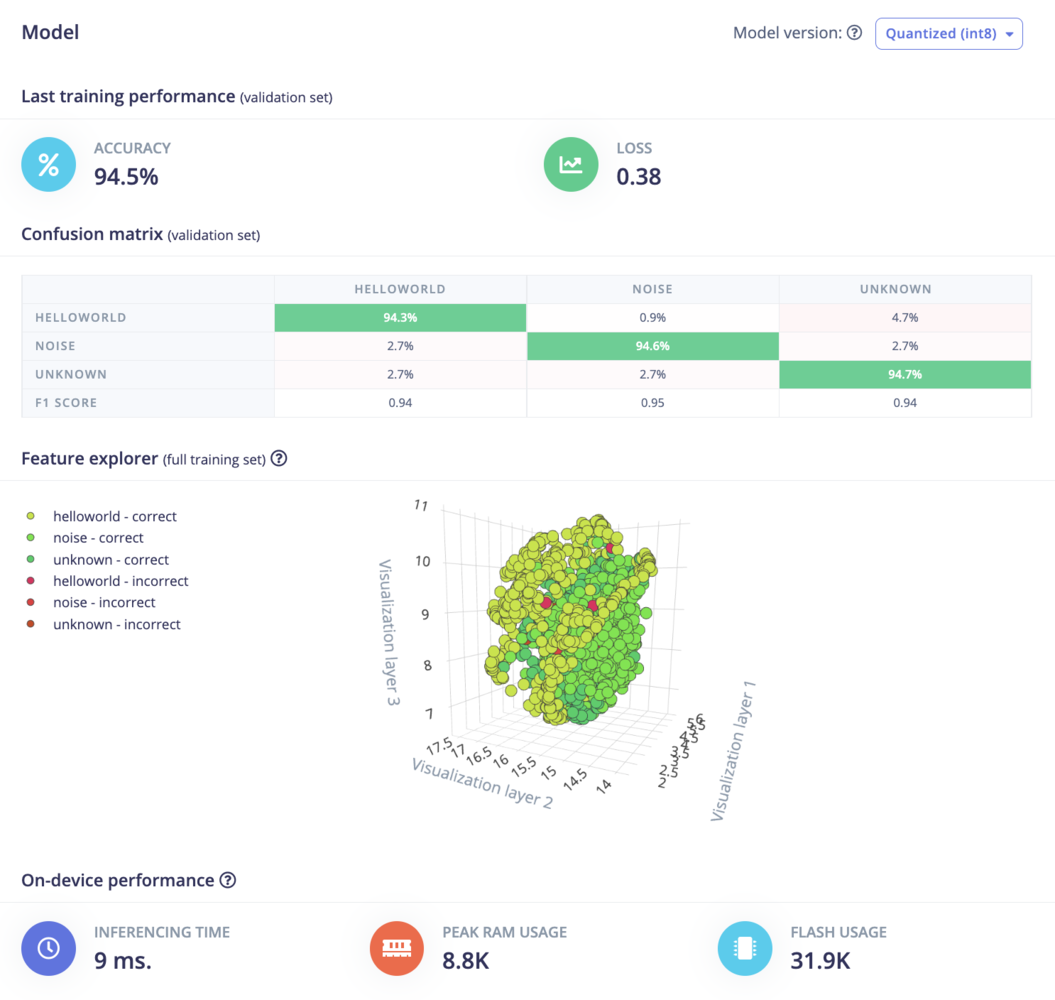Skip to main contentIf you have selected the Classification learning block in the Create impulse page, a NN Classifier page will show up in the menu on the left. This page becomes available after you’ve extracted your features from your DSP block.
TutorialsWant to see the Classification block in action? Check out our tutorials: Neural Network settings
See Neural Network Settings on the Learning Block page.
Neural Network architecture
See Neural Network Architecture on the Learning Block page.
Expert mode
See Expert mode on the Learning Block page.
Training output
This panel displays the output logs during the training. The previous training logs can also be retrieved from the Jobs tab in the Dashboard page (enterprise feature).
This section gives an overview of your model performances and helps you evaluate your model. It can help you determine if the model is capable of meeting your needs or if you need to test other hyper parameters and architectures.
From the Last training performances you can retrieve your validation accuracy and loss.
The Confusion matrix is one of most useful tool to evaluate a model. it tabulates all of the correct and incorrect responses a model produces given a set of data. The labels on the side correspond to the actual labels in each sample, and the labels on the top correspond to the predicted labels from the model.
The features explorer, like in the processing block views, indicated the spatial distribution of your input features. In this page, you can visualize which ones have been correctly classified and which ones have not.
On-device performance: Based on the target you chose in the Dashboard page, we will output estimations for the inferencing time, peak RAM usage and flash usage. This will help you validate that your model will be able to run on your device based on its constraints. 
